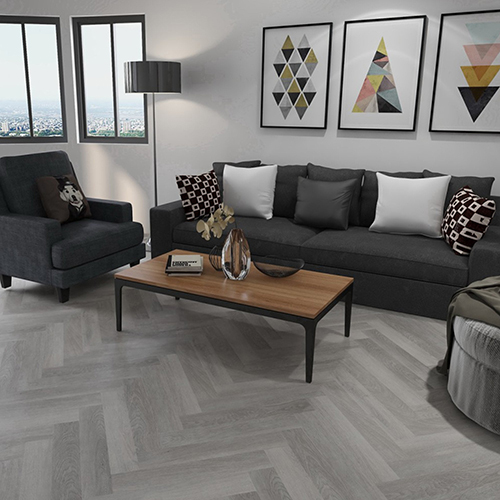Trivia
High-quality waterproof and moisture-resistant flooring
In recent years, more and more people in Hong Kong have been choosing stone plastic composite (SPC) flooring. Its popularity stems from its simple installation, waterproof and moisture-resistant properties, and minimal expansion or contraction due to temperature changes—making it ideal for Hong Kong’s humid climate.
SPC flooring, short for Stone Plastic Composite Flooring, is also known overseas as Rigid Core Luxury Vinyl Flooring. It’s primarily made from stone powder (calcium carbonate, CaCO₃) and plastic (polyvinyl chloride, PVC). The top layer is usually a PVC wear-resistant layer, which helps prevent surface damage. The wear resistance rating varies by brand and specification. SPC flooring typically consists of four main layers: - Wear Layer – A transparent textured plastic layer that provides surface protection and tactile feel. - Decor Film Layer – A printed layer with wood grain patterns; this is what gives the flooring its visual design. - Core SPC Layer – Made from a mix of stone powder, PVC, and stabilizers, this layer ensures structural stability and excellent waterproofing. - Back Padding (Underlayment) – Adds softness and sound insulation to the flooring. Some brands also include an anti-UV coating, which helps protect the surface from ultraviolet rays and stains, preserving the color and appearance of the SPC flooring. Would you like this adapted for marketing, product packaging, or a website? I can tailor the tone to suit different uses.
SPC flooring typically consists of four main layers:
Wear Layer – A transparent textured plastic layer that provides surface protection and tactile feel.
Decor Film Layer – A printed layer with wood grain patterns; this is what gives the flooring its visual design.
Core SPC Layer – Made from a mix of stone powder, PVC, and stabilizers, this layer ensures structural stability and excellent waterproofing.
Back Padding (Underlayment) – Adds softness and sound insulation to the flooring
Some brands also include an anti-UV coating, which helps protect the surface from ultraviolet rays and stains, preserving the color and appearance of the SPC flooring.

Key Advantages of SPC Flooring
The combination of the wear-resistant layer and stone-plastic core provides full functionality: moisture-proof, waterproof, wear-resistant, scratch-resistant, flame-retardant, free of heavy metals, resistant to acids and alkalis, low expansion and contraction rate, insect-resistant—almost achieving perfect balance.
Healthier Choice - SPC flooring is made without glue. Instead, it uses heat-pressing technology to bond all structural layers directly. Most of the PVC used is certified by FloorScore or GreenGuard, ensuring zero or low VOCs (Volatile Organic Compounds) for better indoor air quality.
Cost-Effective & Easy to Install - SPC flooring can be laid directly over any flat surface. Its slim profile means it won’t affect ceiling height—even when installed over existing tiles or wood flooring. No need to spend extra on removing old flooring—saving you time and money.
Easy to Clean & Stain-Resistant - SPC flooring is tough and resistant to discoloration. It stands up well to spills like juice, red wine, cola, or vinegar. Most common household cleaners are safe to use on SPC surfaces.
Nothing is perfect—SPC flooring has its drawbacks:
“Wear-resistant” doesn’t mean “super wear-resistant.” The wear layer of SPC flooring is made of PVC, which isn’t as hard as the aluminum oxide wear layer used in laminate flooring. Sharp metal objects can still scratch the surface of SPC flooring.
Not suitable for outdoor use: Since PVC is sensitive to high temperatures, SPC flooring is also vulnerable to heat. If installed outdoors and exposed to direct sunlight for extended periods, the decorative layer may fade, and the flooring may warp. Therefore, steam mops should never be used to clean SPC flooring.
Not recommended for bathrooms: Although SPC flooring is waterproof, if water seeps underneath from the wall edges over time, it can cause unpleasant odors.
Requires a flat subfloor: SPC flooring demands a relatively even base. If the subfloor has significant height differences, long-term use may lead to damage or broken locking mechanisms.

